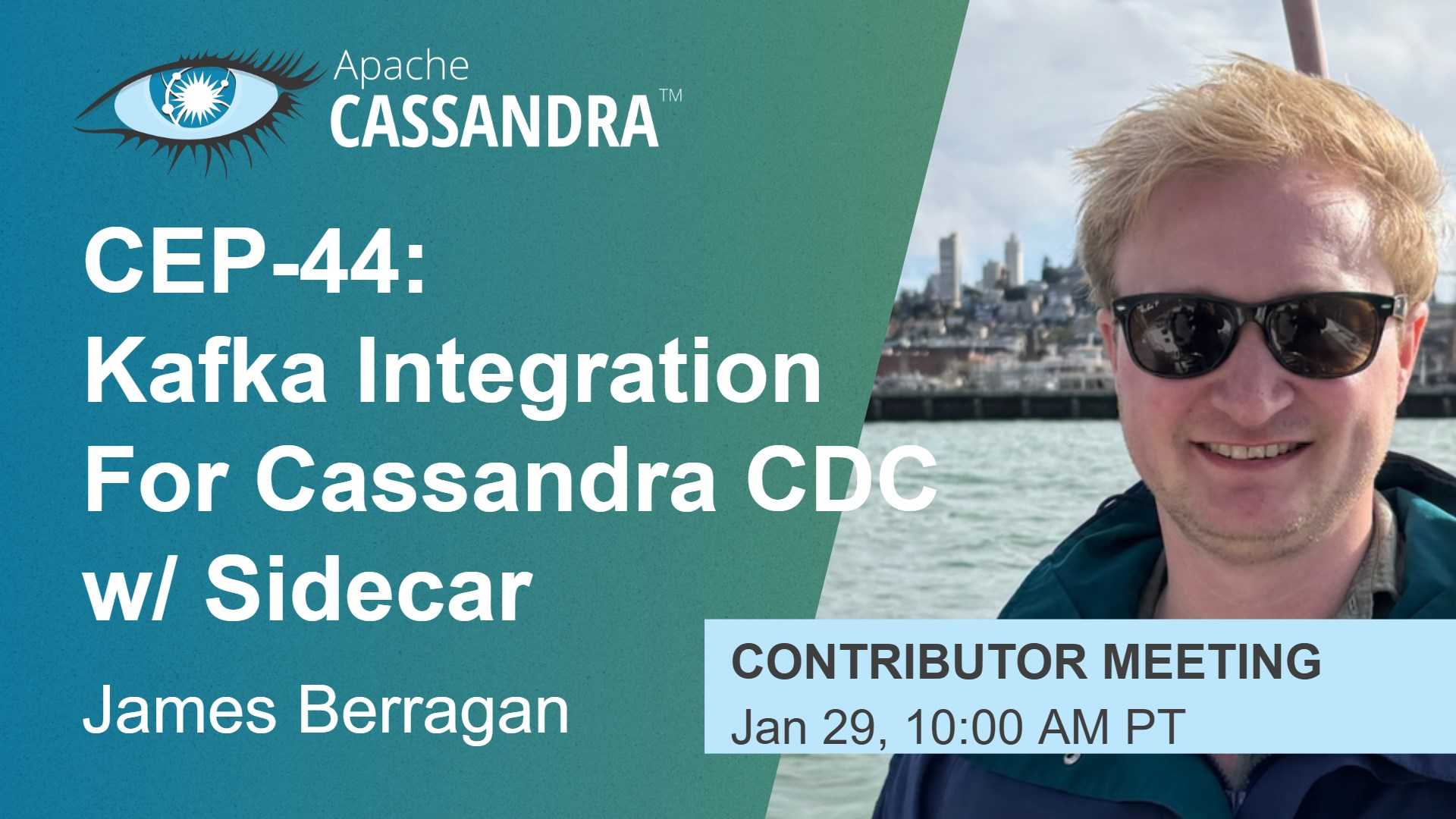Introducing CDC in Apache Cassandra: A Game-Changer for Event-Driven Architecture

Thanks to James Berragan, we had an amazing presentation on Kafka Integration for Cassandra CDC Using Sidecar (CEP-44) at our last PlanetCassandra Global Meetup, CDC in the Cassandra Sidecar.
Overview
Change Data Capture (CDC) is a powerful mechanism for tracking changes in a database, enabling real-time data streaming and analytics. Recently, a new CDC feature was introduced in Apache Cassandra, set to be released as part of Sidecar. This feature is particularly valuable for organizations shifting toward event-based architectures. In this post, we explore what CDC in Cassandra offers, how it works, and the technical details that make it a lightweight yet robust solution.
Understanding CDC in Apache Cassandra
What Is CDC?
CDC allows tracking of database changes by capturing inserts, updates, and deletions. The newly introduced CDC feature in Cassandra builds on its existing commit log mechanism, ensuring efficient change tracking without disrupting database performance.
Why Is This Important?
Organizations increasingly rely on real-time data processing for analytics, event-driven workflows, and integrations with message brokers like Kafka. With this new CDC implementation, Cassandra can seamlessly integrate with these systems, enhancing data consistency and scalability.
Technical Implementation
Hardlinking Commit Logs
The CDC feature in Cassandra 8844 operates by hardlinking the existing commit log to a separate directory (CDC world directory). This allows changes to be efficiently recorded and processed without modifying the standard database write path.
Key Benefits:
- Lightweight and High-Performance: Minimal impact on Cassandra’s normal operations.
- Transparent to Clients: Works in the background without requiring application changes.
- Efficient Change Tracking: Ensures that database modifications are accurately captured.
Managing Cluster Topology Changes
One of the key design aspects of this CDC implementation is its ability to handle cluster topology changes gracefully. When a cluster topology change occurs, the system:
- Reads previous state values from the commit logs.
- Merges them into the new token range for the updated cluster configuration.
- Ensures data consistency without significant performance degradation.
CDC and Kafka Integration
A major advantage of this feature is its ability to stream duplicated CDC events directly to a Kafka topic. This enables:
- Real-time processing of data changes across distributed systems.
- Event-driven workflows that react instantly to database updates.
- Scalable architecture by decoupling database updates from application logic.
Handling Edge Cases
Differentiating Inserts vs. Updates
One challenge in implementing CDC is distinguishing between an insert and an update in collections. The new CDC feature can track these differences, ensuring accurate event representation.
Ensuring Minimal Cluster Impact
CDC must run without disrupting the cluster’s normal operations. The new design:
- Reduces compaction load to avoid performance bottlenecks.
- Uses primary keys and token ranges to efficiently track changes.
- Ensures data integrity by validating that the required quorum copies exist before applying changes.
Conclusion
The new CDC feature in Apache Cassandra represents a significant advancement in database change tracking. By leveraging commit logs and integrating seamlessly with event-driven architectures like Kafka, it enables real-time data streaming with minimal overhead. As more organizations adopt CDC for data synchronization and analytics, this feature is set to become an essential tool in modern distributed systems.
Stay tuned for its official release with Sidecar and explore how CDC can revolutionize your data architecture!
Would you like to present at the next PlanetCassandra Global Meetup? Come join the Apache Software Foundation’s Slack group and join the #cassandra-com-dev group and propose your idea.


